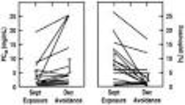-
About
- About Listly
- Community & Support
- Howto
- Chrome Extension
- Bookmarklet
- WordPress Plugin
- Listly Premium
- Privacy
- Terms
- DMCA Copyright
- © 2010-2024 Boomy Labs
 Erika Yigzaw
Erika Yigzaw
Listly by Erika Yigzaw
Most of us don't get enough of it, and vitamin D deficiencies have been linked to everything from fertility problems, depression, lowered immunity, and psychological issues. Here are my favorite resources and research about Vitamin D. Feel free to add to this list!

Vitamin D enhances host protective immune responses to Mycobacterium tuberculosis by suppressing Interferon-gamma (IFN-g) and reducing disease associated inflammation in the host. The objectives of this study were to determine whether vitamin D supplementation to patients with tuberculosis (TB) could influence recovery.

Vitamin D in high doses may help prevent bone fractures

Most Americans and Canadians up to age 70 need no more than 600 international units (IUs) of vitamin D per day to maintain health, and those 71 and older may need as much as 800 IUs, says the IOM's report Dietary Reference Intakes for Calcium and Vitamin D. The amount of calcium needed ranges, based on age, from 700 to 1,300 milligrams per day, according to the report, which updates the nutritional reference values known as Dietary Reference Intakes (DRIs) for these interrelated nutrients.

The increasing prevalence of allergic diseases in childhood in the last decades could be linked to concomitant dietary changes, especially with the modified and lower consumption of fruit, vegetables and minerals. The consumption of these foods by pregnant women and children in the first years of life seems to be associated with a reduced risk of asthma and related symptoms. Foods that can prevent the development of wheezing through their antioxidant effects contain vitamin C and selenium; blood levels of these elements correlate negatively with the risk of wheezing. Intake of vitamin E during pregnancy also appears to be correlated with a reduced risk of wheezing for the unborn child. Similarly, low intake of zinc and carotenoids by pregnant women is associated with an increased risk of wheezing and asthma in childhood. Fiber also has anti-inflammatory properties and protective effects against allergic diseases such as atopic dermatitis and asthma. The consumption of fat influences the development of the airways. Populations in Western countries have increased their consumption of n-6 PUFAs and, in parallel, reduced n-3 PUFAs. This has led to decreased production of PGE2, which is believed to have a protective effect against inflammation of the airways. Conflicting hypotheses also concern vitamin D; both an excess and a deficiency of vitamin D, in fact, have been associated with an increased risk of asthma. Further studies on the role of these substances are necessary before any conclusions can be drawn on a clinical level.
Many mothers who breastfeed don't give their infants vitamin D supplements, as is recommended by the American Academy of Pediatrics.

A persons level of vitamin D may actually be a predictor of his or her ability to lose fat, according to Shalamar Sibley, a researcher in the University of M...

Vitamin D is an essential vitamin that boosts the immune system and plays vital roles in human metabolism. Did you know that tasty mushrooms are one source for vitamin D, and that you can naturally multiply their levels by exposing them to sunlight?

Older women with insufficient levels of vitamin D gained more weight than those with sufficient levels of the vitamin, according to a new study funded by the National Institutes of Health and published online today in the Journal of Women's Health. The study of more than 4,600 women ages 65 and older found that over nearly five years, those with insufficient levels of vitamin D in their blood gained about two pounds more than those with adequate levels of the vitamin.

Vitamin D and calcium are dietary requirements, but it’s unclear how much is best for us. New draft findings conclude that for healthy, postmenopausal women, daily supplementation with low levels of vitamin D — up to 400 international units — combined with 1,000 milligrams of calcium, does not reduce fracture risk.

Table of Contents Vitamin D Deficiency: A Global Concern Vitamin D Recommendations Vitamin D Sources and Function New Vitamin D...

NEW YORK (Reuters Health) - Older adults who are at high risk of falls should have physical therapy and take vitamin D supplements to reduce their chance of injury, according to new recommendations from

Abstract OBJECTIVE: To determine if vitamin D intake is associated with acute lower respiratory infections (ALRI) in children. METHODS: The vitamin D intakes of children younger than 5 years of age admitted to hospital with either bronchiolitis or pneumonia were compared to an unmatched control group of the same age without respiratory infection. Caregivers of 197 children completed a questionnaire collecting information on demographic variables, ALRI risk factors and diet. Associations of ALRI with vitamin D intake and other ALRI risk factors were determined. RESULTS: The mean vitamin D intake of children with ALRI was 48 IU/kg/d compared to 60 IU/kg/d in the control group. When controlling for age, ethnicity, socio-economic status, northern residence, breastfeeding, immunizations and smoking contact, children with a vitamin D intake of less than 80 IU/kg/d were greater than 4 times more likely to have ALRI compared to children with a vitamin D intake exceeding 80 IU/kg/d (OR=4.9; 95%CI: 1.5~16.4). CONCLUSIONS: A higher vitamin D intake than currently recommended might be needed to offer protection against diseases such as ALRI. Increased vitamin D supplementation could have important public health consequences, as bronchiolitis and pneumonia are the most common reasons for hospitalization in young children. (Full English version will be available online at www.amepc.org/tp.)
![Worsening severity of vitamin D deficiency is asso... [Am J Surg. 2012] - PubMed - NCBI](http://media.list.ly/production/11506/94574/images_185px.png)
PubMed comprises more than 22 million citations for biomedical literature from MEDLINE, life science journals, and online books. Citations may include links to full-text content from PubMed Central and publisher web sites.
![Cord blood vitamin D deficiency is associated wit... [Pediatrics. 2011] - PubMed - NCBI](http://media.list.ly/production/11506/94575/images_185px.png)
PubMed comprises more than 22 million citations for biomedical literature from MEDLINE, life science journals, and online books. Citations may include links to full-text content from PubMed Central and publisher web sites.

CONCLUSION: Even though the Brazilian population live in a tropical region, most patients had suboptimal levels of serum vitamin D, and this pattern may play a role in the development of hyperparathyroidism.

Los Angeles, California, USA – A team of academic researchers has identified the intracellular mechanisms regulated by vitamin D3 that may help the body clear the brain of amyloid beta, the main component of plaques associated with Alzheimer's disease.

A recent study of obese and non-obese children found that low vitamin D levels are significantly more prevalent in obese children and are associated with risk factors for type 2 diabetes. This study was accepted for publication in The Endocrine Society's Journal of Clinical Endocrinology & Metabolism ...

Fair-skinned people who burn quickly in the sun may need to take supplements to ensure they get the right amount of vitamin D, new research finds.

And the deficiency can present numerous health problems, including bone fractures, Parkinson's disease and diabetes.
